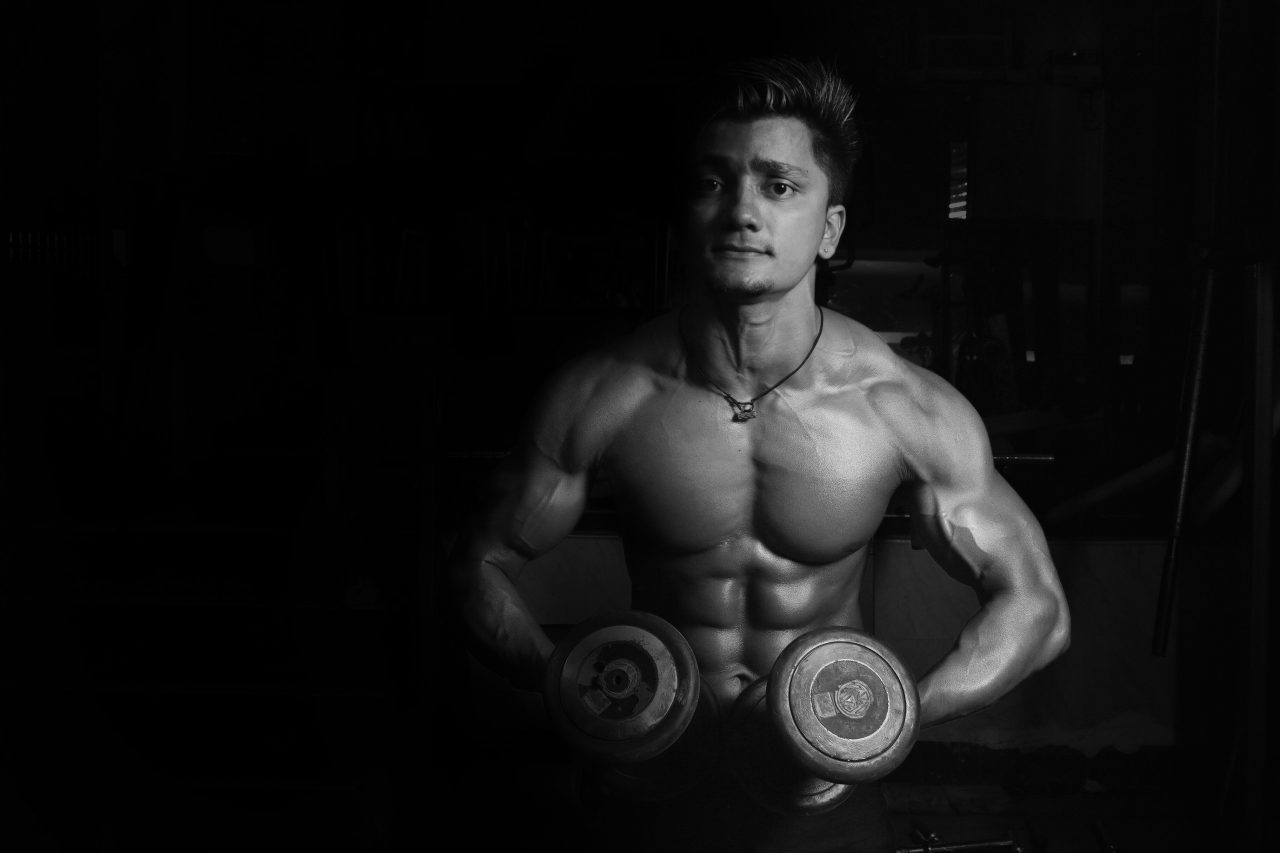
How to sneak some variety into your training program
“Change things up”
“Keeps it interesting”
“I want to cover all bases” etc. etc. etc.
All of those reasons matter on why you should add a little bit of variety in your workouts. Today I want to go over some other “why’s” and offer you some suggestions on how to sneak some variety into your training program. We are going to focus on Resistance Training for this article. Of course, variety in your cardiovascular program matters too. For this, see my 2 articles on Cardio here and here.
*Wait till you see how different the heart adapts to both low intensity and high intensity – one of the biggest “wow” moments of my educational career, but I digress…
Let’s take a look at 2 major areas which benefit in regards to resistance training and variety:
Neuromuscular benefits and Mechanical benefits
Shortly said, we can add variety in both using 3 variables:
1- Variety in Speed (tempo, fast, slow, etc.)
2 – Variety in Angles/Force Vectors
3 – Variety in Load and Intensity
*As an aside, too little variety and too much variety are not a good thing either. Understanding when and why to add variety is the key.
Let’s start with an extreme example of someone who likely doesn’t add too much variety in their training, as their sport doesn’t necessarily call for it: the classic Powerlifter.
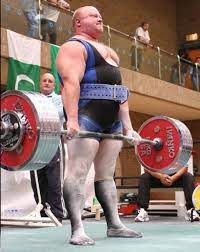
If you didn’t know, the sport of Powerlifting consists of 3 major lifts: the Bench Press, the Deadlift, and the Back Squat. Training to increase the absolute total load on these lifts is the name of the game. Most powerlifting training revolves around variations of these 3 lifts. They use variety namely in the “speed” component versus the angle and load type, which usually are the same (angle) and always damn intense, even though they have some less intense days (“dynamic day”).
Similarly, you could use this analogy with a jogger. Note I didn’t say runner – 2 very different activities; same speed (slow jog), same exact angles (barely any), and always bodyweight.
One of the calling cards of someone who doesn’t use a lot of variety will be inefficiency in reproducing their performance in other speeds, angles, and loads. Ask someone who only jogs to bust out in a sprint, or demonstrate a toe-touch stretch, and you will see what I mean.
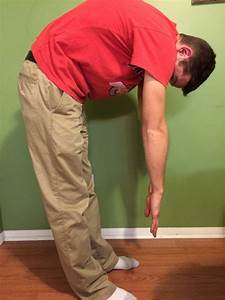 not cool man
not cool man
I’m not knocking either of these activities. However, I can say that without adding variety in angles, intensities, and speeds, they can present themselves with a deficiency in various things.
God gave us things like ball and socket joints at the hips and shoulders. This means they can move in a 360 degree manner, but only if you actually do so! Someone with “tight” hips usually only moves forward and backward, and never laterally or at different angles. So the body, being the adaptive beast that it is, adapts to that new reality. The result is a ball and socket joint that now becomes akin to a hinge joint. Stated differently: your hips become knees because they’re not used in a ball and socket manner!
The old adage ” if you don’t use it, you lose it” applies here.
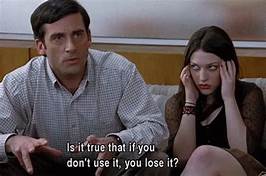
When the human organism adapts to a stressor (i.e. exercise) , it means this: Structuring itself skeletally and/or neurologically to conserve energy.
Getting bigger muscles after a weight lifting program is the adaptation to conserve energy. Bigger and stronger muscles mean your body will use less energy (ATP) the next time you do that same workout/stressor. Losing flexibility is another adaptation. If you don’t use your body the way it’s designed, it will adapt and conserve energy by not allowing you that ability.
On the other hand, someone who does add variety in the form of varying speeds, angles, and intensities can reap a lot of benefits, such as healthier joints, increased mobility, strength in various positions, and smoother and more athletic movement.
As you know, I espouse the long game of training versus training for any particular event/sport. The long game means you can still do stuff at 65 that you did at 35, and variety plays a big part in that. There is a reason a basketball player is usually more flexible than someone who only jogs: more speed, loads, and especially angles. Sprints have a much higher intensity and range of motion than jogging.
Let’s dig deeper:
Neurological Benefits
As we know, muscles are “task-driven”. They perform a certain way to complete a certain task. Therefore, repetitive motor tasks create efficiency. Joggers get better at jogging, expending less calories for the same task as they get more efficient around the task they repeat. This is exactly why jogging everyday to lose weight is a losing battle.
Wow moment: Fitness is really just the art of using less energy (burning less calories) for the same task. When you realize that, variety really matters if weight loss is your goal. Stated differently, if you are trying to burn calories with your workout, do something you suck at, or a different workout structure each time. For example, my cousin John Galvin would burn a ton of calories if he tried to swim a mile.
 Burning calories
Burning calories
This is the “SAID” principle in fitness, from Wikipedia:
“The SAID principle asserts that the human body adapts specifically to imposed demands. It demonstrates that, given stressors on the human system, whether bio-mechanical or neurological, there will be a Specific Adaptation to Imposed Demands (SAID). For example, by only doing pull-ups on the same regular pull-up bar, the body becomes adapted to this specific physical demand, but not necessarily to other climbing patterns or environments.”
The pull-up really is a perfect example for this. Use the same grip each time (angle), and you get better at that grip. It doesn’t necessarily mean you can do pull-ups with other grips easier. Variety in speed, angle, and intensity/load would enhance Sensory Motor Integration. This means you would get better at pull-ups in other grips. The nerves and their connections are trained in multiple pathways versus just the same ole’ one. Therefore, your motor intelligence is higher now. Your fingers, grip, arms, back, core, etc. are smarter in different positions. This is called Neurogenesis (Nerves) and Synaptogensis (Connections) – if you want to be a nerd about it.
Balance, Daniel-son
Another obvious example is someone like a Major League pitcher. They use one of their arms in one of the most violent movements in humanity – a 100 mph fastball (same speed, angle). Do I even have to explain this?
Stated differently, do you think a right-handed pitcher miiiight have balance issues between his throwing arm and non-throwing arm? If you engage in any activity that requires muscular force and only use one side 100% of the time, either try to go ambidextrous on that activity, or try to off-set the activity by doing what you gotta do on the other side.
For instance, I chop my firewood with my right arm. That requires me using my right arm in a upward/downward diagonal angle in a forceful chopping motion. I can start either reproducing that movement with my left arm with the axe, or in the gym/home with something like a band or a cable. I also should monitor my shoulder mobility on both sides. That’s because repeated use of my right arm for chopping wood will certainly cause some mobility restrictions in that arm over time. I’d bet you a dollar your dominant shoulder/arm is less flexible than your non-dominant arm.
To monitor that, here is an easy movement screen you can use: self-Shoulder Mobility screen.
So that is an example of adding variety to achieve balance because of over-use of one side of the body. This is extremely common in both sports and daily tasks.
In summary, and in Neurological terms:
You can get the following benefits just by changing some things up with your speed, angles, and loads/intensities:
- Enhance Sensory Motor Integration
- Improve Motor Vocabulary which may lead to greater Motor Intelligence. You move smoother and easier, like Michael doing the Moonwalk versus your uncle trying it at a wedding
- Enhance Neurogenesis and Synaptogenesis
- Balance and Symmetry
Simply put, our clients become more efficient and intelligent at moving by training the nervous system to familiarize itself with different positions. This is imperative for a culture that moves less often and participates in many repetitive tasks.
Mechanical Benefits
Your tissues are highly adaptable, but compared to the nervous system, they take a long time for adaptations to occur. Ever go on a bodybuilding or “sculpting” program? It doesn’t happen overnight!
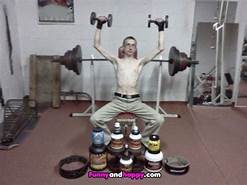
Swole by summer…
In our connective tissues (especially fascia, which is that spider web that connects your whole body), Davis’ Law states that our tissues remodel along lines of stress. Wolff’s Law states that our bones have a capacity to remodel along lines of stress.
The mechanism behind these adaptive properties is called Mechanotransduction.
How this relates to using variety is that our tissues need exposure to variable forces/stressors in order to function optimally and stay healthy.
Many musculoskeletal injuries are really just injuries of the fascial system. Luckily, over the past 20 years there has been an abundance of research giving us clarity on how we can enhance this structure through training. It’s evident that variability is essential to promoting a healthy connective tissue. And, as you know since you have been reading, that variety comes in manipulating:
- Speed of movement
- Angles and Force Vectors (variable postures and planes of motion)
- Load/Intensity (both bodyweight and moving external mass) and Intensity (rep ranges, etc.)
You will get higher tolerance to multi-directional movement, which is how life works. Oh, and that redundant movement wear and tear is kind of a big deal too. Perform a stressor over and over and over (Monday Bench Press all year) and you will see what I mean.
If you only focus on the muscular system, and not the stability and supporting structures, you won’t be in the game long. You won’t have integrity in your structure.

More stable = more force production. More muscle stimulation = more cross sectional area of muscle fibers. As a bonus, more lean muscle mass will result, as long as you are eating and managing your program wisely.
What about training to just look good (Hypertrophy + Low Body Fat)?
*Yes, lean muscle mass means hypertrophy ladies, so stop saying you “don’t want to get big”! If you want lean muscle mass, then that is exactly what you want to do… Increase lean muscle mass. Losing excess body fat is another story, but stop trying to tell me you “want toned arms” without adding “muscle mass”. Doesn’t happen that way. Please don’t mistaken bony arms for toned arms. Bones are gross.
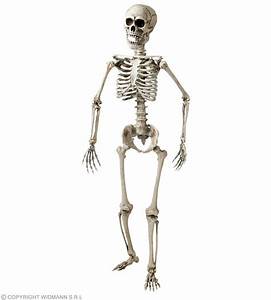 Not sexy
Not sexy
Further, having too much muscle is the hardest problem to acquire. Losing it is the easiest thing around, so relax.
For muscles to grow, two major things need to happen: you need to create Mechanical Tension (something trying to stretch and/or tense your muscles ) and Metabolic Stress (that burning “pump” you feel).
A key way to achieve both is by using TUT (Time Under Tension). Having good stability is a pre-requisite for TUT, so your other structures that support your muscles (skin, tendons, ligaments) need training too. Variety will cover that. We will easily achieve that by alternating in Open Chain and Closed Chain work.
*For you smarty-pants out there, “muscle damage” is also thought to help this process, but that is debatable, which is just me saying I’m not smart enough to know for sure. You can really go down the rabbit hole with hypertrophy science too, going into things like the mTor pathway, but that would be another 1000 words. Let’s wait on that.
In short, Open Chain refers to when your torso stays fixed and your limbs are moving (things like Bench Press, Leg Press, Lat Pulldown, Seated Rows, etc.). Closed Chain refers to the opposite–your torso moves during the movement (things like Push-ups, Squats, etc.).
The big takeaway is that Closed Chain movements have a larger effect on your stabilizer muscles, which have to fire first for safe movement. But Open Chain movements will give you a safe ability to really tax and recruit those Type 2b fibers. These are the muscle fibers that make you look swole and lean.
Closed Chain: Stabilizer love.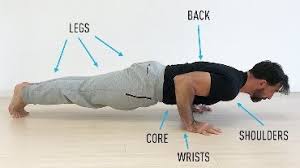
Open Chain: Type 2 swole muscle love.
Consider:
Muscles are task-driven and recruit enough fibers to get the job done. If I only Bench Press for “chest day”, it means I’m mainly recruiting my fan-shaped pec muscle at a single line of stress (angle) to get said task done (the actual press). But then you are ignoring other angles of stress that could be used in a different task (like a closed chain push up variation).
So, variety stimulates more muscle to be used to get swole in a safe manner. This is one of the reasons why bodybuilders are more jacked and swole than power lifters. Waaaay more variety in their movements. Powerlifters are mainly using mechanical tension while using similar intensities and angles. Bodybuilders use both mechanical tension/stress and metabolic stress (the pump, bro) and a vast variety of angles and loads.

So, to kill 2 birds with one stone: include both Open and Closed chain work!
Open Chain will allow huge tension. You will see an increase in Type II muscle fibers recruitment (the muscles you see “toned” on someone, sometimes called “Phasic” fibers) but with a decrease in Type I muscle fibers (stabilization-based fibers-which keep your bones and joints healthy, sometimes called “Tonic” fibers), compared to a Closed Chain exercise. To include those stabilizer muscles more, use some Closed Chain work like Dips and Push-Ups.
Stated differently, to achieve long-term orthopedic health, you need to support your new swole self with said Type 1 fibers, while enhancing your swole Type II fibers for the beach-body. Variety will take care of both. As discussed, Open chain work is great for Type II fiber work. Closed chain work is great for Type 1 stabilizer work.
As a bonus, add different angles and speeds in there as well. Here is what I mean:
Sample “Chest workout”:
#1: Bench Press (Open Chain), but heavy ass loads doing 6-12 reps–mechanical tension
#2: Dips: (Closed Chain), bodyweight load, with a slightly faster tempo (speed) to accumulate metabolic stress (1 short of fatigue)
#3: Chest Fly>Press with a focus on high reps (Open Chain), 6-12reps
#4: T-man push ups: 2 short of fatigue (Closed Chain)
To sum up, training with some variety will enhance ideal coordination and synchronization of all muscle fiber types for various motor patterns, creating greater sustainability during an aesthetic-focused program. Combining variety with the mechanisms for muscle tissue growth, which is mechanical tension + metabolic stress (and maaaaybe muscle damage), is a recipe for success. Different loads at different speeds at different angles. That’s the name of the long game.
Variety for Weight loss? Can’t I just use Elliptical?!
Yes and no! To lose weight you gotta move more and expend energy. The more movement literacy you have, the more options you have on your exercise menu, so you can create things like long duration circuits versus the same ole’ elliptical ride. You can also decrease risk of injury since life’s tasks are so variable in nature. A lot of folks get hurt doing something they aren’t used to because the situation calls for it. For example, running to your bus fast when you are only used to a slow Elliptical ride.
So, instead of a 30 minute Elliptical, try something like this:
*6 rounds of 2 minute Elliptical, 1 minute Farmer’s Walk, 1 minute Jumping Jacks, 1 minute Towel Battling Ropes, 1 minute Bear Crawl.
Load, Speed, and Angle variety = check!
Cheat Sheet for Variety
- Speed manipulation: Pauses, EI’s, Extra Slow, Extra Fast (power), Combo of all in the same set!
- Angles/Force Vectors manipulation: Multiplanar, Closed Chain, Open Chain variety, different angles of bench/cables, etc.
- Load manipulation: Bodyweight, External Load, Odd objects, Closed/Open Chain variety
Takeaway:
Change it up, dude! You have a plethora of ways to do it now.




